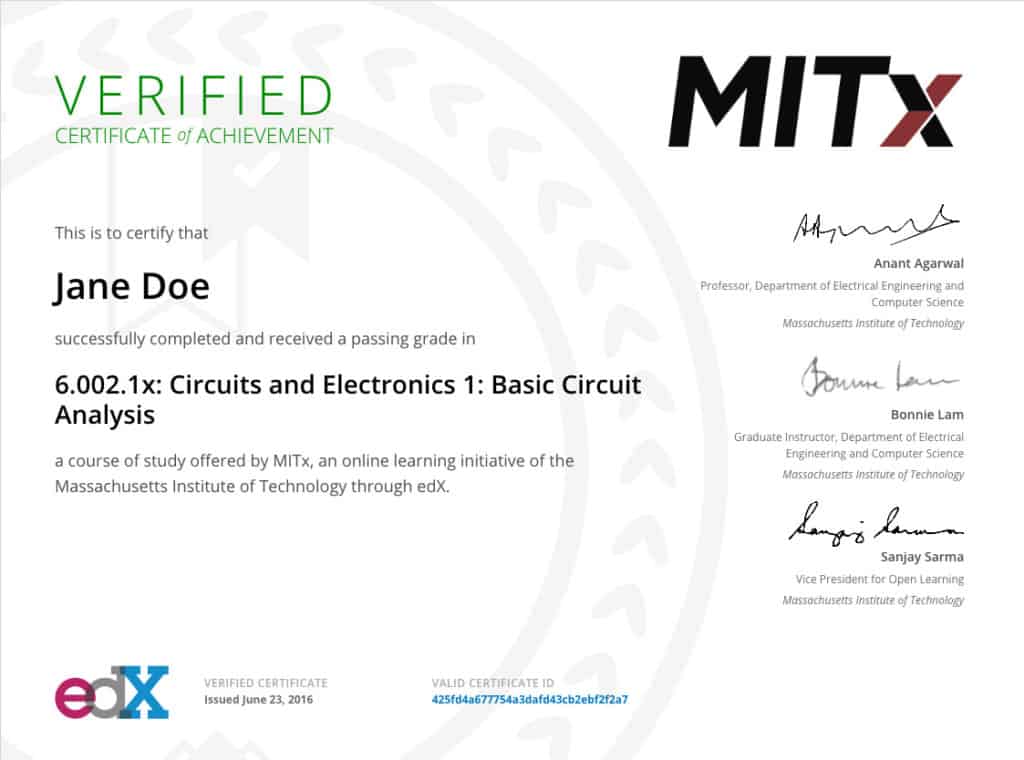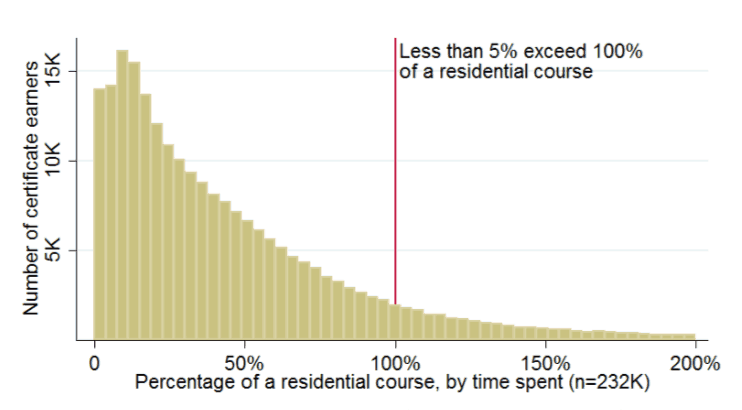7 Insights from HarvardX and MITx’s Year 4 Report
Harvard University and MIT recently released their findings from four years’ worth of their courses on edX.
A joint research team from Harvard University and MIT recently released their findings from four years’ worth of their courses on edX. According to their report, the release represents one of the largest surveys of massive open online courses (MOOCs) to date.
Predictably, the data produced piles of interesting facts about the state of online education. Here are seven insights from HarvardX and MITx’s “Year 4 Report” that caught my eye.
Serious scale
Fact: From the summer of 2012 through to the fall of 2016, 290 courses went live, 245,000 certificates were awarded, and 2.4 million unique users participated in one or more HarvardX or MITx open online course.
My take: The scale is astonishing. Even more impressive is that this data includes 2012 — the “birth year” of MOOCs. Online education ramped up quickly and continues to grow in 2017.
Certificate earners vs. explorers vs. participants
Fact: For the typical HarvardX/MITx course or module, 500 participants earn certificates (5%), 1,500 explore half or more of the course’s content (15%), and 7,900 will access the course content (80%).
My take: The certificate earner is a rare breed.
People intend to get certificates, but they don’t
Fact: Fifty-four percent of responding participants said they intend to earn a certificate. Of these 537,726 intenders, only 16% end up earning a certificate.
My take: More than four fifths of people who intend to earn a certificate don’t do so. I’d love to survey these people for their reasons for not following through. Becoming busy in other areas of life, underestimating the workload, and losing interest are probably all popular reasons. These percentages are heavily influenced by a certain course, however, which leads to my next notable finding …
CS50x is soul-crushing
Fact: Though the median certification rate for individual courses is 30% among participants that intend to earn a certificate, Harvard CS50x’s certification rate is 1%.
My take: CS50x’s massive online presence is reflected in the survey because the course accounts for one third of the participants that intend to earn a certificate. The course’s estimated completion time is just north of 200 hours. It is demanding, especially the weekly problem sets that take 10–20 hours. The 1% certification figure is understandable. It is unfortunate that CS50x crushes the souls of so many learners, because the course is amazing.
Fewer females in CS, STEM MOOCs
Fact: Seventeen percent and sixteen percent of participants in computer science and STEM courses, respectively, are female. Forty-seven percent of learners in Humanities, History, Religion, Design, and Education (HHRDE) courses are female. Thirty-five percent in Government, Health, and Social Sciences (GHSS) courses are female.
My take: The gender issues in the CS and STEM fields rear their ugly heads. The National Science Foundation has women receiving 17.9% of bachelor’s degrees in computer science, which corroborates these findings. Access isn’t the only thing driving these issues.
Teachers use MOOCs often
Fact: Thirty-two percent of responding participants are teachers, or were teachers at one point.
My take: I loved how the report phrased the impact of this finding, so here is a direct quote: “This finding was a useful indication of possible nontraditional pathways through which MOOCs may have a positive effect on educational outcomes, in this case by providing resources and learning opportunities to teachers.”
People spend less time “in class”
Fact: The median participant in most courses spends 30% of the time they would in an equivalent residential course. For CS courses, the rate is 59%. For STEM courses, it is 50%.
My take: MOOC students can cut corners. They are rarely supervised. A “pass” is often all that is required, rather than a letter or percentage grade. Residential courses, however, are also inefficient. Long lectures do not work for many (including myself), because students often have to relearn all the content later.
The full report (with tables and figures) can be downloaded here.
Author Bio
David Venturi created a personalized data science master’s curriculum for himself using MOOCs. He has a dual degree in Chemical Engineering and Economics, and especially enjoys math, stats, and coding. He’s a huge baseball and hockey fan, and writes about the latter with a focus on analytics.












Random observer
I find this article misleading.
CS50x’s naive certification rate was about 1%. Median naive certification rate for all courses was <10%.
As it is stated on the paper, naive certification rate (certified/participants) tells very little. Not all of the participants plan to complete the course, some are just looking around etc.
One can access the data behind the paper. It does not provide figure for certification rate of the people who actually tried to complete the course but failed for some reason, but it provides certification rate of participants that accessed half of course content or more: ~5%.
When it comes to certification rate of students that are actually aiming to pass the course, who knows what it is, but my guess is that it is MUCH higher and not that many souls are crushed.
Here is the data
http://year4.odl.mit.edu/appendix.html